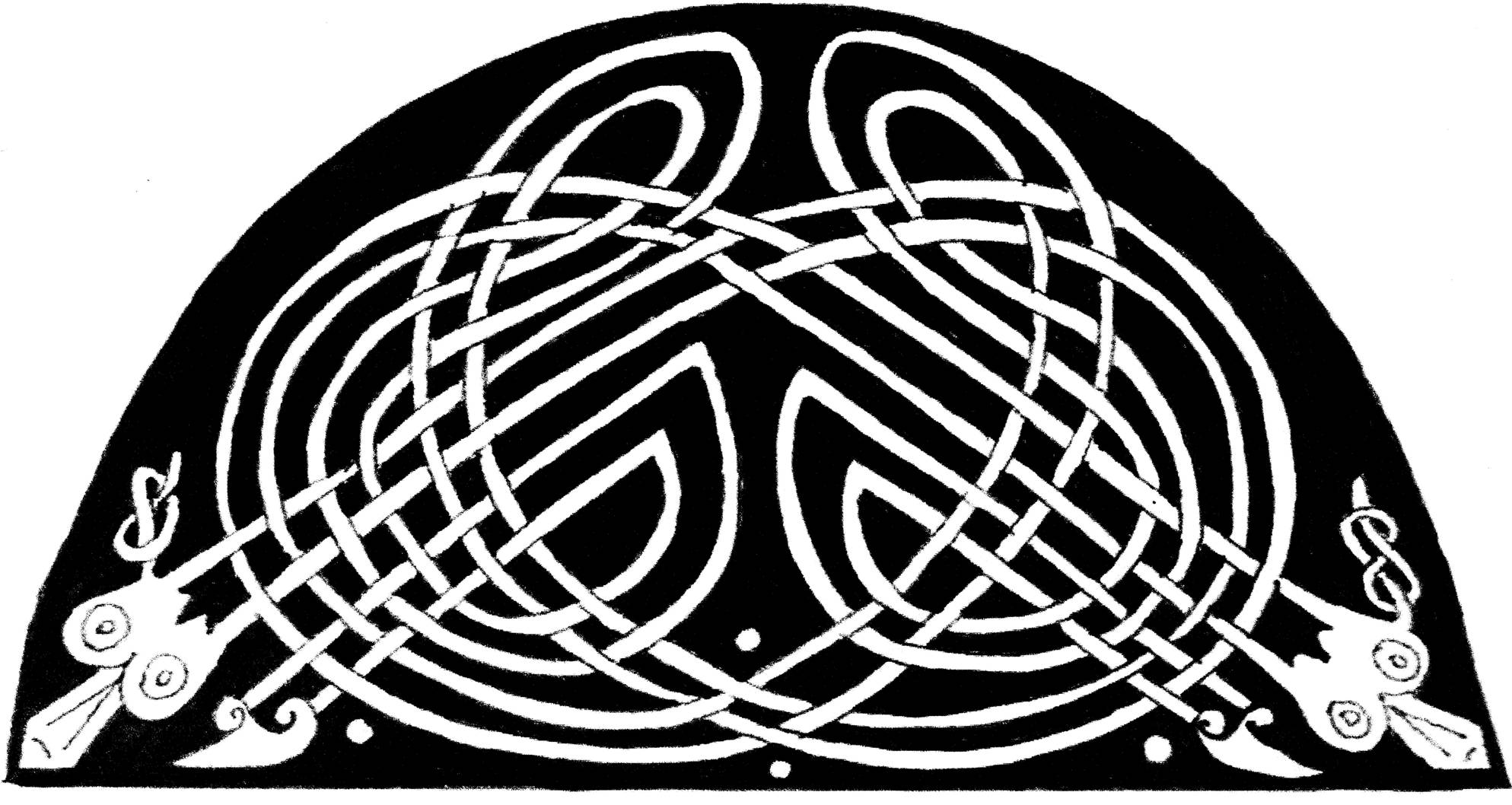The origin of the intricate Celtic knot begins thousands of years ago when our ancestors watched the skies, measured the movement of the sun, moon, and stars, and recorded their findings with dots and lines. Around 8000 BC they saw and named seven planets (then including the sun and moon), and named the days of the weeks after them. They ordered the names of the days by calculating the speed of the planets through their orbits. Megaliths were built to increase the accuracy of their observations. The tools they used to lay out these great stone observatories were strings and rods.
Women were spinning and using thread tens of thousands of years ago. Cords and threads were made by hand and had many uses other than making their clothing. Cords were used for measuring and were divided into specific lengths by knots (Dunan-Enzmann). The sections of strings were used to calculate how to divide a circle, to measure time from the passing of stars, and thus to predict the seasons.
Since then knots have acquired many symbolic meanings, and are also used as an information system. For centuries knots have symbolized engagement because knots, like engagements, are binding. In the Celtic, Hindu, and Chinese cultures, knots are designed into wedding garments, representing continuity, longevity, and eternity. Sending messages through love knots is popular in many cultures.
Knots are used in heraldic design, the most famous of which is the Bowen knot – or more accurately an “unknot,” a symbol of the family name. Weaving the string over and under creates intricate patterns, which are used to represent the genealogy of monarchies and nobles. The actual design of the knot is likely inherited from generations of families that were involved in navigation, textiles, or stone masonry.
Another similar function of string, cords, and ribbons is the Maypole. You must have three or more to braid. Maypoles have three, four, five, six, and more ribbons that are woven in and out, over and under by the dancing children. The songs that accompany the dances in ancient times were meant to help children remember how to read the stars, remember the four directions, the eight winds, and to measure time. When the weaving is finished the ribbon is removed from the pole and flattened, and the knot that remains is a physical representation of a mathematical equation necessary to know how to divide a 360-degree circle into single degrees, necessary to find longitude.
Celtic knots are a graphic form of mathematical processes which derive mostly from calendrics. There are countless beautiful decorative letters in the illuminated manuscripts, all designed to preserve the knowledge of how to divide a circle, use the Venus clock, and find longitude. It is easy to see how the woven line that makes these intricate, beautiful patterns could be done with strings, especially if you have ever played Cat’s Cradle.




